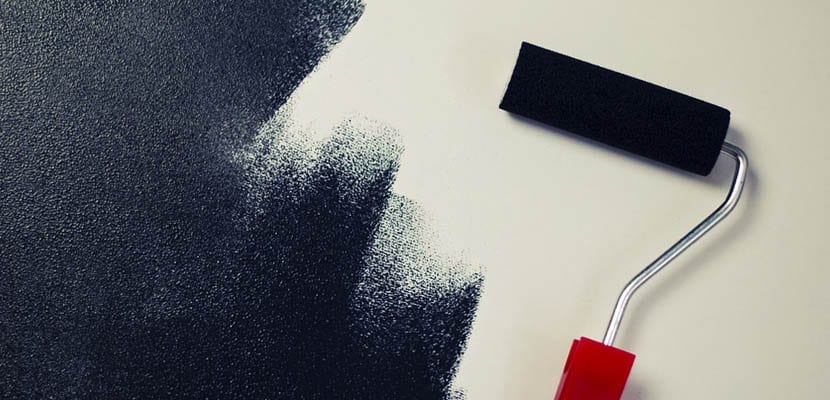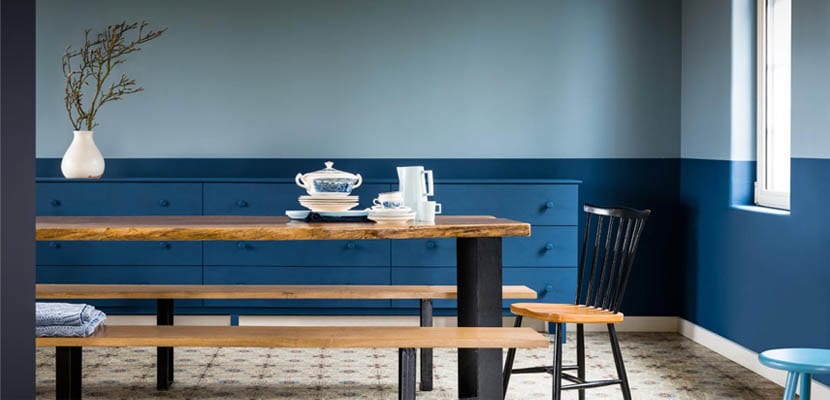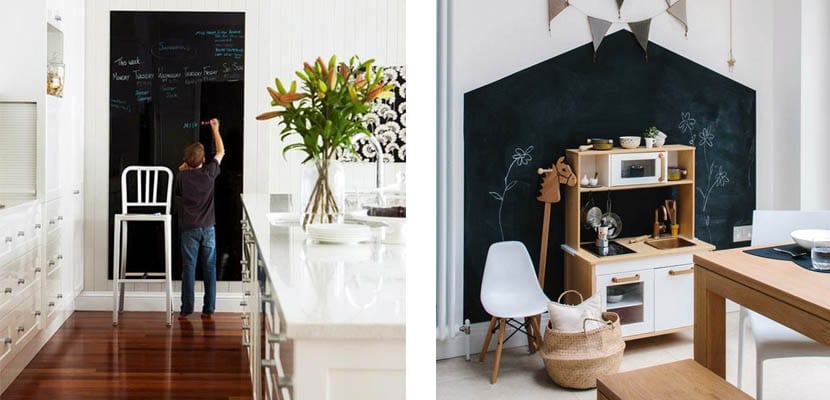
Although white is still the color chosen by most to paint the walls, every day we are more who take risks with color. And as important as choosing the right color for a certain room, is choosing the type of paint indicated to do so.
The varieties of wall paint that we can find on the market can be overwhelming. The discovery of new synthetic paints has allowed us to expand the catalog and have paints that allow us to give color to all kinds of surfaces. Do you want to know what are the most common types of wall paint and where to use them?
Plastic or latex paint
Plastic paint is made up of a vinyl medium and a pigment, as well as fillers responsible for providing the mixture with the appropriate density and body. It is the most used to paint interior walls as it can be applied to all types of walls (plaster, plasterboard, plaster, cement, stone, tempera, ...). It also has properties that make it easy to work with it:

- Conclusion simple to apply. The good coverage of the paint makes applying it simple and fast by saving layers.
- They dry very fast.
- Unlike other paintings, barely gives off odors.
- The majority they are washable; If necessary, you can use a damp cloth at any time to erase light stains.
- They come in three types of finish: glossy, satin and matte.
- Conclusion water resistant. They resist in areas with a slight degree of environmental humidity but cannot be in direct contact with water.
- Is versatile. Plastic paint can be applied on materials as diverse as plaster, cement and derivatives, metal or wood, although some cases require a previous coat of primer.

There are two types of plastic paint, acrylic paint and vinyl paint, each with its own characteristics:
- Acrylics: It is the most resistant type of paint for both interior and exterior and has a greater waterproofing capacity. Provides some resistance to mold and the effects of the sun.
- Vinyl: They offer greater versatility and are highly washable. They allow to obtain high quality satin finishes with surprising decorative effects. However, it is only recommended to use them on dry walls since they do not offer protection like acrylics.
Synthetic enamels
Synthetic enamels are made from different solvent-based alkyd resins; so that offer greater durability than water-based plastic paints. Although they can be applied on most substrates, they are not as popular an option as the previous one because in addition to requiring a previous base, they require long drying times and give off a strong odor. The latter can make the job of painting truly unpleasant if you are working in an area with poor ventilation.

Due to their properties and despite their drawbacks, these paints are recommended for painting walls or surfaces that suffer greater wear such as kitchen or bathrooms. Surfaces more exposed to humidity, temperature changes or shocks. Like plastic paints, they can be presented in gloss, satin and matte.
Tempera
It is usually used on plaster plastered walls and ceilings that are not exposed to much wear and tear and is interesting because it offers the possibility of create textured finishes like gotelé or striped pasta. On other surfaces that or have been treated, it offers little adherence, so a fixative should always be used before application.

It's a wall paint economical, permeable and easy to spread but its use is not recommended on walls that suffer dampness as mold would form on the surface. It is not washable either, if you passed a damp cloth over a stain you would take part of the paint on the cloth.
Blackboard paint
Slate finish paint can be applied on multiple surfaces; smooth walls, ceramic, furniture or wooden doors. On porous surfaces it can be used without the need for a primer, while on non-porous surfaces a previous primer layer will be necessary.

It's a painting highly washable, resistant and it is available in different colors and finishes. It is often used a lot in the design of modern kitchens and children's bedrooms to be used as a note board and blackboard with which to awaken the creativity of the little ones. You can also use them in the hall, in the dining area ... Cleaning it will be as easy as wiping its surface with a dry cloth or a damp sponge.
Neither plastic paint nor synthetic enamel, there is no single valid option. We cannot say that one wall paint is better than another, not at least without knowing the project. Hence we encourage you to consult a professional when you want to paint a surface at home. Depending on the type of surface and the characteristics of the room itself (light, humidity, temperature ...) they will know how to guide and advise you on which is the best paint. Because in addition to adding aesthetic value to it, it can be interesting or essential to protect it from humidity for a good result.